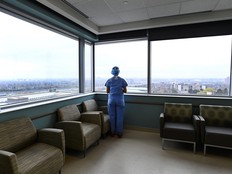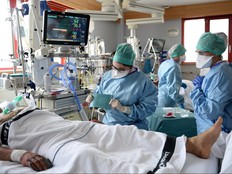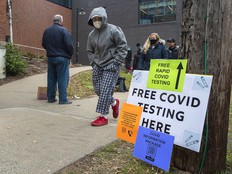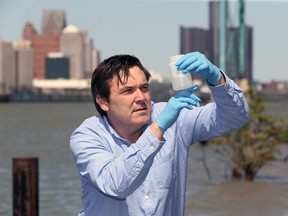
article content
The future of the Windsor area is literally going down the toilet when it comes to predicting what COVID-19 has in store for the region, and the good news is that those discharges indicate a 10 to 20 percent reduction in the load of virus found in sewage.
Commercial
This ad has not been uploaded yet, but its article continues below.
article content
Data from the University of Windsor Wastewater Initiative shows the virus load from this Omicron-driven wave peaked to date on January 5 and has gradually declined through January 10. More water tests were done on Friday.
“The virus load is still high, but there has been a slow decline in the virus signal in the wastewater over the last few days,” said Mike McKay, executive director of the Great Lakes Environmental Research Institute.
“What we are seeing mirrors what is happening in other North American communities, who entered the Omicron wave before us. We have some optimism.”
There are signs that Omicron is on the decline.
Water samples are collected daily from the five water treatment plants in Windsor and Essex counties. The university is also testing for Chatham-Kent and the city of Thunder Bay.
Commercial
This ad has not been uploaded yet, but its article continues below.
article content
McKay said the Omicron pattern, which accounts for about 90 percent of new infections now occurring in the community, is different than the Alpha and Delta variants.
“Delta wave lasted for several weeks to a month, but we expect it to subside very quickly,” McKay said. “There are signs that Omicron is in decline.”
McKay said there will be a delay of about a week to 14 days before hospitals see any improvement if the downward trend continues.
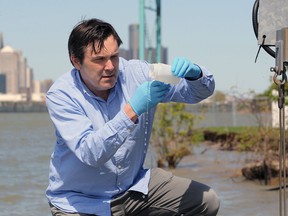
He also warns that there are still some wildcards that could cause cases to rise again.
“We don’t know what the impact of reopening schools might be,” McKay said. “The other concern is that the virus could mutate once again.
“We haven’t seen or heard of any new mutations, but the virus could mutate again as long as there is a significant unvaccinated population.”
Commercial
This ad has not been uploaded yet, but its article continues below.
article content
The one thing McKay confidently predicts is that sewage testing is here to stay as a more prominent plank in public health policy.
All of Ontario’s 34 public health units covering 75 percent of the province’s population are conducting wastewater testing. The provincial government’s science table is using it as one of the tools in its decision-making process.
“Internationally and across North America, wastewater use has been a good predictor of what to expect,” said David Musyj, executive director of Windsor Regional Hospital.
Musyj said the sewage results generally suggest what will happen in the next three to seven days in the community.
In recent weeks, with Ontario’s PCR testing capabilities overwhelmed, Musyj said sewage testing has been the best source of current and accurate information.
Commercial
This ad has not been uploaded yet, but its article continues below.
article content
He added that the information provided by sewage has become so important that the hospital was considering a public campaign to encourage people to remember to flush the toilet immediately after use.
“The data produced by Dr. McKay and his team has been critical since the start of the pandemic in forecasting not only community spread, but also eventual hospital attendance and hospitalizations,” Musyj said.
“This is critically important when testing for COVID-19 has been severely limited and daily test results are not indicative of what we need to be prepared for on the ground.”
Musyj added that the sewage tests also helped confirm exactly which variant local health officials were dealing with. Although the treatment for the different strains does not vary, preparing for the volume of patients generated by Omicron required a different approach.
Commercial
This ad has not been uploaded yet, but its article continues below.
article content
-
Jarvis: Schools reopen Monday, now we need to make sure they stay open
-
GLIER studies sewage disposal to track COVID-19
“We have always been informed, once a community starts seeing Omicron, you will see a sudden influx of people to the ER and eventual hospitalizations,” Musyj said.
“We knew for a month that our highest pressure weeks in the hospital would be January 10 and 17.
“Having this projected and confirmed with wastewater, without having access to full test results now, we were able to share with staff and the community and know internally that these were going to be our worst weeks.”
Reference-windsorstar.com


